
How to Use 5v SMPS: Examples, Pinouts, and Specs
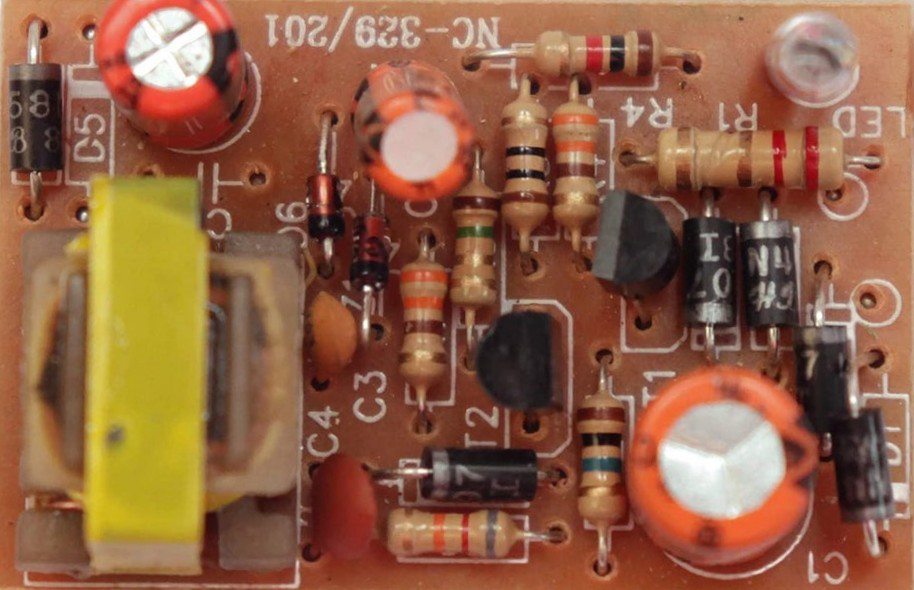
 Design with 5v SMPS in Cirkit Designer
Design with 5v SMPS in Cirkit DesignerIntroduction
The 5V Switch Mode Power Supply (SMPS), manufactured by Ashish Tech Guruji (Part ID: Power Supply), is a compact and efficient power supply unit designed to deliver a stable 5V DC output. Utilizing switching regulators, this SMPS ensures high efficiency and minimal heat generation, making it ideal for powering a wide range of electronic devices and circuits.
Explore Projects Built with 5v SMPS
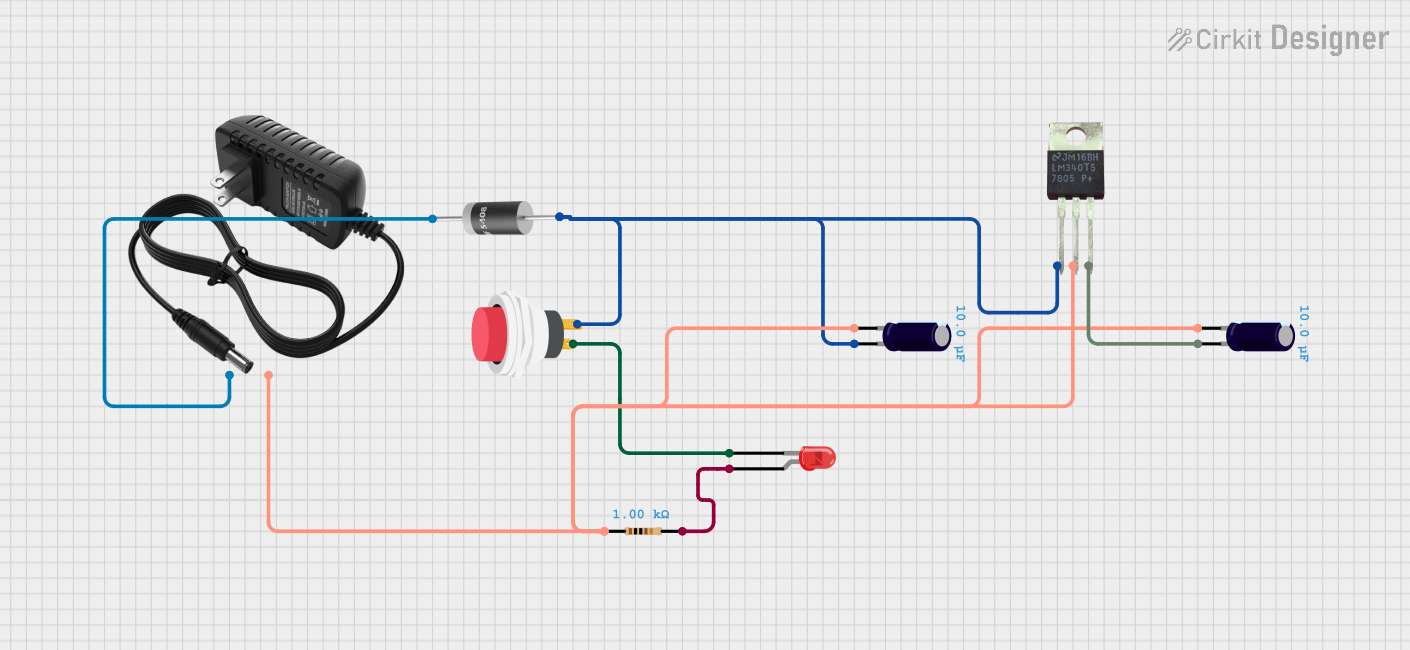
 Open Project in Cirkit Designer
Open Project in Cirkit Designer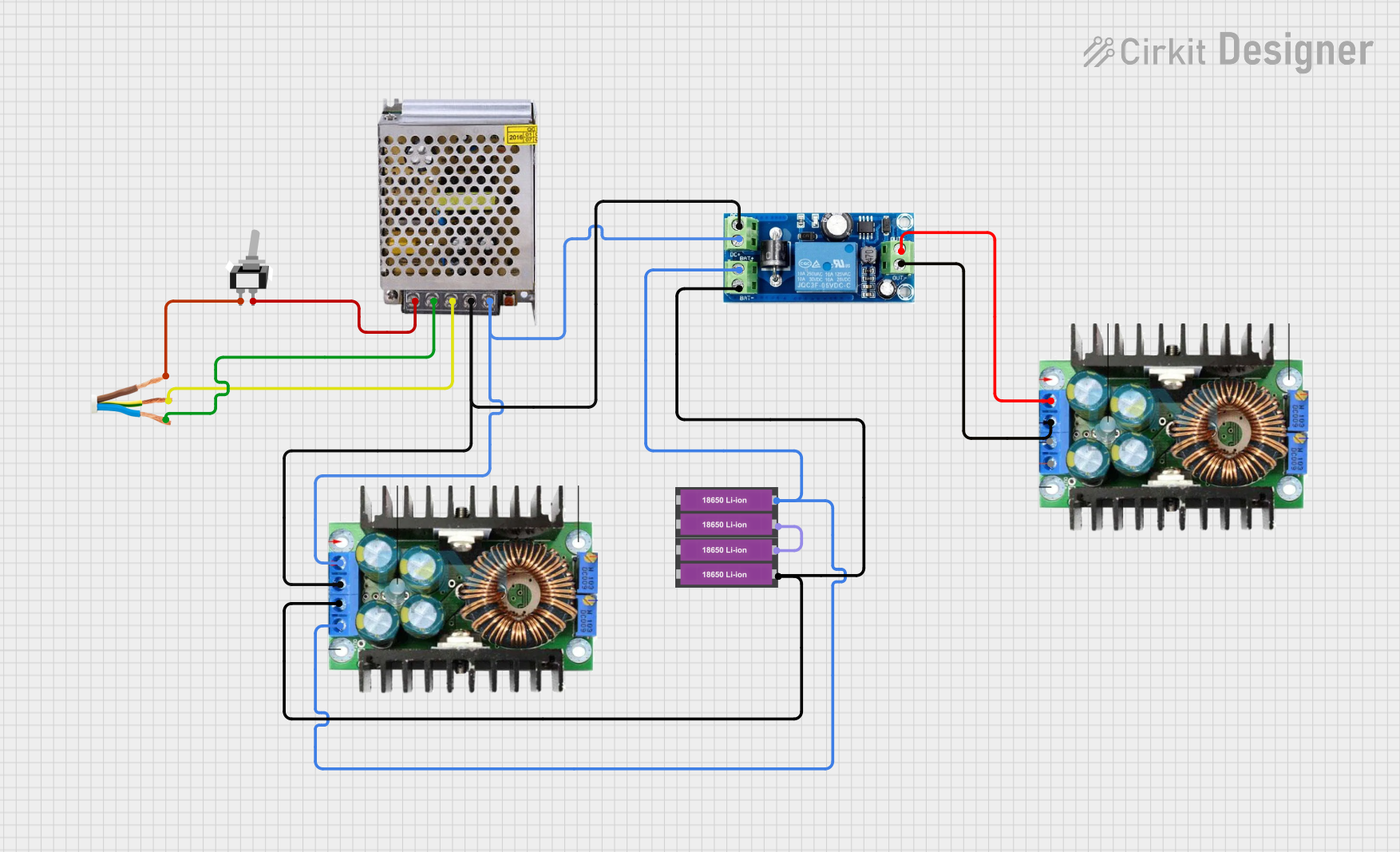
 Open Project in Cirkit Designer
Open Project in Cirkit Designer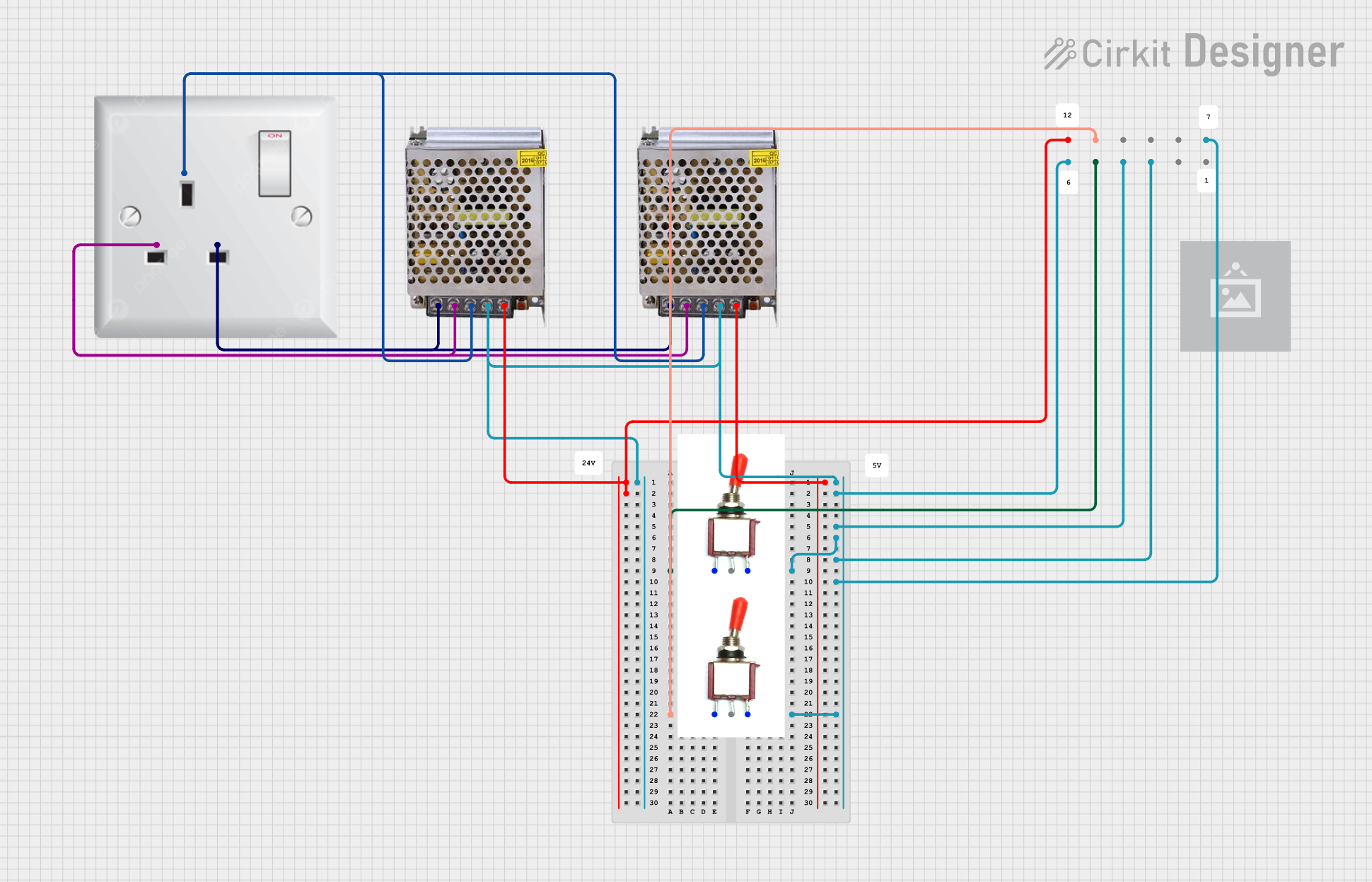
 Open Project in Cirkit Designer
Open Project in Cirkit Designer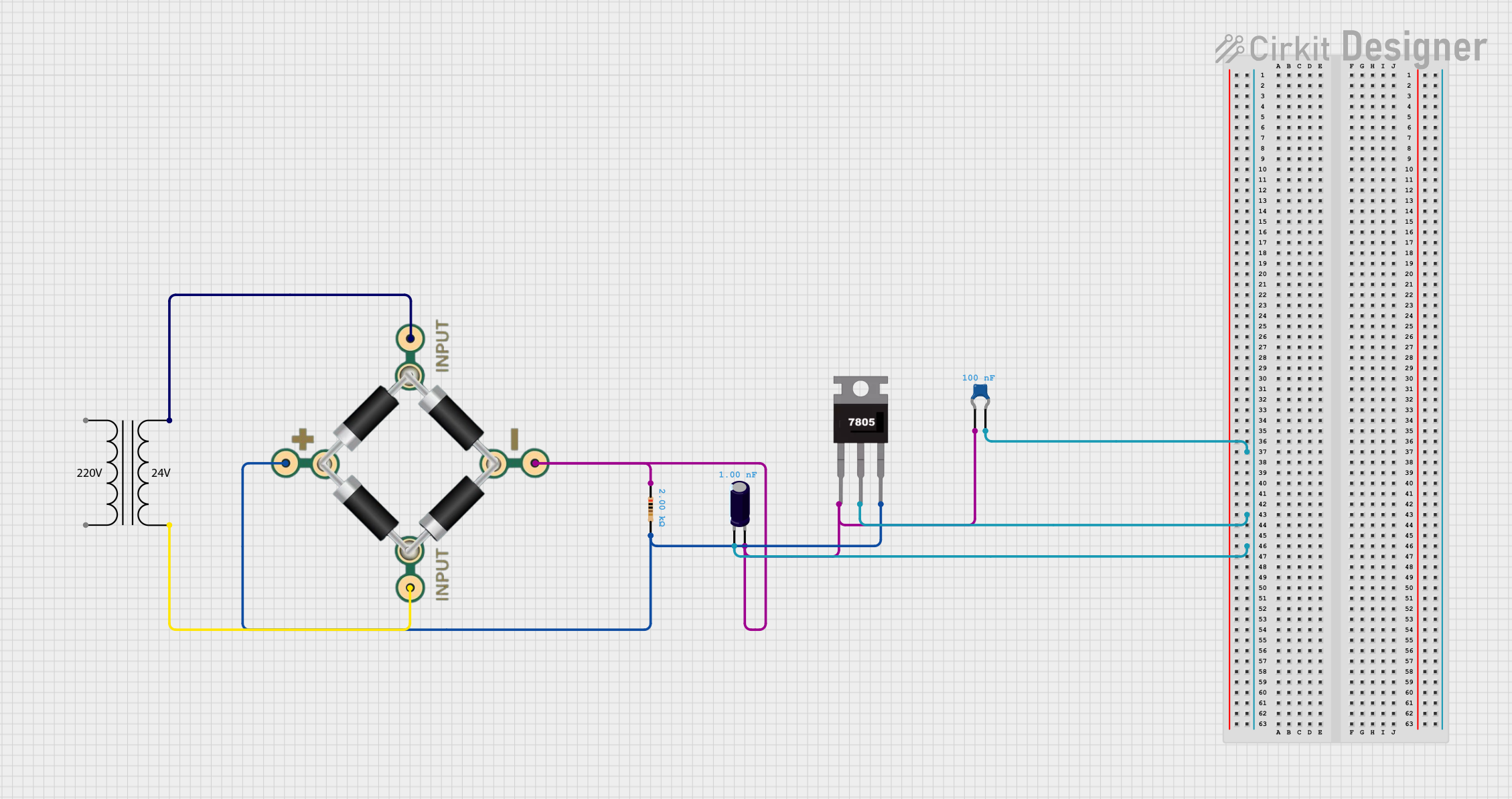
 Open Project in Cirkit Designer
Open Project in Cirkit DesignerExplore Projects Built with 5v SMPS

 Open Project in Cirkit Designer
Open Project in Cirkit Designer
 Open Project in Cirkit Designer
Open Project in Cirkit Designer
 Open Project in Cirkit Designer
Open Project in Cirkit Designer
 Open Project in Cirkit Designer
Open Project in Cirkit DesignerCommon Applications and Use Cases
- Powering microcontrollers (e.g., Arduino, Raspberry Pi)
- Supplying power to sensors, modules, and small electronic devices
- Battery charging circuits
- Embedded systems and IoT devices
- Replacement for linear power supplies in low-power applications
Technical Specifications
The following table outlines the key technical details of the 5V SMPS:
| Parameter | Specification |
|---|---|
| Input Voltage Range | 100V - 240V AC, 50/60Hz |
| Output Voltage | 5V DC ± 5% |
| Output Current | Up to 2A |
| Efficiency | ≥ 80% |
| Ripple and Noise | ≤ 50mV |
| Operating Temperature | -10°C to +50°C |
| Storage Temperature | -20°C to +85°C |
| Dimensions | 50mm x 25mm x 20mm |
| Weight | Approximately 30g |
| Protection Features | Overload, Short Circuit, Overvoltage |
Pin Configuration and Descriptions
The 5V SMPS typically has four pins or terminals for input and output connections. The table below describes each pin:
| Pin/Terminal | Label | Description |
|---|---|---|
| 1 | AC IN (L) | Live input for AC mains (100V - 240V AC) |
| 2 | AC IN (N) | Neutral input for AC mains |
| 3 | DC OUT (+) | Positive 5V DC output |
| 4 | DC OUT (-) | Ground (GND) for 5V DC output |
Usage Instructions
How to Use the 5V SMPS in a Circuit
Connect the Input Terminals:
- Connect the AC IN (L) terminal to the live wire of the AC mains.
- Connect the AC IN (N) terminal to the neutral wire of the AC mains.
- Ensure proper insulation and safety precautions when working with AC mains.
Connect the Output Terminals:
- Connect the DC OUT (+) terminal to the positive input of your circuit.
- Connect the DC OUT (-) terminal to the ground (GND) of your circuit.
Verify Connections:
- Double-check all connections to ensure there are no loose wires or short circuits.
- Use a multimeter to confirm the output voltage is 5V DC before connecting sensitive devices.
Power On:
- Plug the SMPS into the AC mains and switch it on.
- The SMPS will provide a stable 5V DC output to power your circuit.
Important Considerations and Best Practices
- Safety First: Always handle the AC input connections with care to avoid electric shock.
- Load Requirements: Ensure the total current draw of your circuit does not exceed the SMPS's maximum output current (2A).
- Ventilation: Place the SMPS in a well-ventilated area to prevent overheating.
- Testing: Use a multimeter to verify the output voltage and current before connecting sensitive components.
- Polarity: Ensure correct polarity when connecting the output terminals to your circuit.
Example: Using the 5V SMPS with an Arduino UNO
The 5V SMPS can be used to power an Arduino UNO by connecting its output terminals to the Arduino's power input. Below is an example Arduino sketch to blink an LED when powered by the SMPS:
// Example: Blink an LED using Arduino UNO powered by 5V SMPS
// Connect the 5V SMPS output to the Arduino's 5V and GND pins.
const int ledPin = 13; // Built-in LED pin on Arduino UNO
void setup() {
pinMode(ledPin, OUTPUT); // Set the LED pin as an output
}
void loop() {
digitalWrite(ledPin, HIGH); // Turn the LED on
delay(1000); // Wait for 1 second
digitalWrite(ledPin, LOW); // Turn the LED off
delay(1000); // Wait for 1 second
}
Troubleshooting and FAQs
Common Issues and Solutions
No Output Voltage:
- Cause: Incorrect input connections or no AC mains power.
- Solution: Verify the AC IN (L) and AC IN (N) connections and ensure the mains power is on.
Output Voltage Too Low or Unstable:
- Cause: Overloading the SMPS or a faulty unit.
- Solution: Reduce the load to within the 2A limit or replace the SMPS if defective.
Excessive Heat Generation:
- Cause: Poor ventilation or operation near the maximum load limit.
- Solution: Ensure proper airflow around the SMPS and reduce the load if necessary.
Buzzing Noise from the SMPS:
- Cause: High-frequency switching noise or loose components.
- Solution: Check for loose connections and ensure the SMPS is securely mounted.
FAQs
Q1: Can the 5V SMPS power a Raspberry Pi?
A1: Yes, the 5V SMPS can power a Raspberry Pi, provided the total current draw (including peripherals) does not exceed 2A.
Q2: Is the SMPS safe to use with sensitive electronics?
A2: Yes, the SMPS provides a stable 5V output with low ripple and noise, making it suitable for sensitive devices.
Q3: Can I use the SMPS in outdoor applications?
A3: The SMPS is not weatherproof. For outdoor use, ensure it is enclosed in a weatherproof housing.
Q4: What happens if I reverse the output polarity?
A4: Reversing the output polarity can damage your circuit. Always double-check connections before powering on.
Q5: How do I know if the SMPS is overloaded?
A5: If the SMPS shuts down or the output voltage drops significantly, it may be overloaded. Reduce the load to resolve the issue.